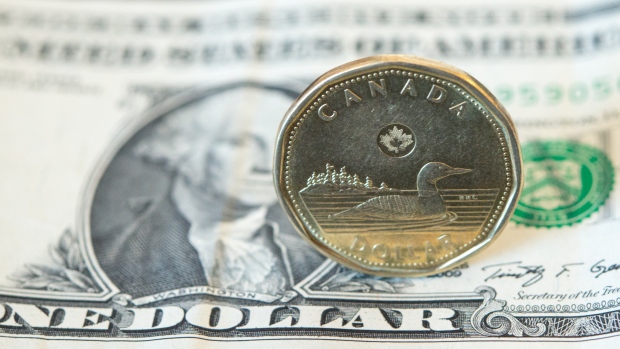Jun 14, 2017
It’s 'amazing' the 'dirt-cheap' loonie hasn't caught Trump's attention: Rosenberg
, BNN Bloomberg

David Rosenberg says a rebounding Canadian economy and more aggressive U.S. Federal Reserve could convince Bank of Canada Governor Stephen Poloz to hike interest rates as early as next month.
“Who’s to say they wouldn’t start moving in July,” Rosenberg told BNN in an interview. “We do know one thing about Stephen Poloz, he has surprised the markets in the past.”
On Wednesday, the U.S. Federal Reserve boosted its key short-term interest rate, the third hike since December of last year. The Fed's move to boost the target range for the overnight federal funds rate by one-quarter point to between 1.0 per cent and 1.25 per cent had been widely expected by the market.
It doesn’t make sense for Canada to maintain its ultra-low interest rate policy while the Canadian economy is strengthening and the U.S. is raising rates, Rosenberg said.
An interest rate move would take many by surprise, says Rosenberg.
“I go to the States a lot — they barely have a two per cent growth economy, everyone there thinks the economy is just great. Look at Janet Yellen today at her press conference,” he said. “The Canadian economy — the trend is closer to three per cent and I can’t speak to a Canadian who has anything positive to say about the Canadian economy.”
If the BoC starts to close the gap between Canadian and U.S. interest rates, and oil prices move to above US$50 per barrel, it could push the loonie to as high as 82 cents US, he said. “To get the Canadian dollar to the 80-82 cent range — which is far beyond the consensus — is actually not a harebrained forecast at all under those two developments,” said Rosenberg.
If the loonie remains low, Canada runs the risk of attracting the ire of U.S. policymakers who may start to see the low Canadian dollar as unfair competitive advantage, he says
David Rosenberg is stunned that the current gap between the U.S. dollar and the loonie hasn’t caught the attention of U.S. President Donald Trump.
“The loonie is so dirt-cheap that domestic industry unit labour costs, in U.S. dollar terms, are now 26 per cent below the levels stateside,” the chief economist and strategist at Gluskin Sheff + Associates, wrote in a note to clients Wednesday. “The implications of this gap for foreign direct investment into Canada and manufactured exports are hugely bullish.”
The Canadian dollar has been one of the worst-performing major currencies of the year, and Rosenberg said he “knows all too well how uncool it is to be bullish on the Canadian dollar these days.” But the loonie has seen substantial gains in the last few days, climbing as high as 75.95 cents US Wednesday — its highest level since February — following hawkish comments from the Bank of Canada earlier in the week.
Senior Deputy Governor Carolyn Wilkins said in a speech Monday that the Bank would assess whether it needs to keep interest rates at near-record lows as the economy continues to grow. The central bank’s Governor, Stephen Poloz, echoed that sentiment Tuesday by saying low interest rates have “largely done their work.”
In his note, Rosenberg said that the last time Canada had this type of cost advantage over the U.S. was in 2008, when the loonie rallied from about 79 cents US to 94 cents US within the span of a year.
“It is amazing that this gap has managed to escape the wrath of the Trump protectionist economics team, but suffice to say that this differential is not sustainable and that in turns means that the Canadian dollar at current levels isn’t sustainable, either,” Rosenberg said.
With files from John Gray, Producer, BNN